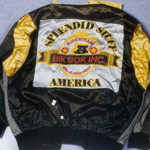 The public had last seen Gary Dobson and David Norris in 1998, running a gauntlet of hate after appearing at the judicial inquiry into the first, failed police investigation.
The public had last seen Gary Dobson and David Norris in 1998, running a gauntlet of hate after appearing at the judicial inquiry into the first, failed police investigation.
They and the other three original suspects were jeered and spat at as they left the hearing and Norris lashed out at someone as he left.
Then, as now, the two men denied any part in the murder of Stephen Lawrence. Stephen, 18, was an A-level student who was planning to be an architect.
He was stabbed on his way home with a friend one night in Eltham, South London, in April, 1993. He was stabbed twice by someone among a group of young, white men. One of them had shouted a racist insult as they charged at the two black teenagers.
Prosecutor Mark Ellison QC
Stephen's mum Doreen Lawrence told Sky News just before the trial: "I still haven't got over that part of it. I just think it was a cruel way. I think the saddest thing was the way in which he died."
The trial hinged on new forensic evidence discovered by scientists 15 years after the murder.
The evidence had always been there - blood, fibres and hair linked to Stephen on the suspects' clothes - but was revealed only with new scientific techniques applied in a cold-case review in 2007.
Prosecutor Mark Ellison QC told the jury: "Were it not for these new scientific findings, it would still be the case that there would be no reliable evidence to support a prosecution of anyone for committing this crime."
The main forensic evidence against Gary Dobson was on his bomber jacket, a garment he claimed he "hadn't worn for years."
A tiny blood stain soaked into the jacket's collar was a billion-to-one match to Stephen's blood, said the prosecutor.
Flakes of similar blood were found in an evidence bag the jacket was kept in.
Stephen's clothes - a polo shirt, trousers, cardigan and coat - provided the bulk of the evidence against the two men.
Nineteen tiny fibres matching Stephen's clothing were found on Dobson's jacket, the bag it was kept in and on his cardigan.
Forensic scientist Alan Tribe
There were seven fibres from Stephen's clothes on a sweatshirt seized from Norris's home and two hair fragments matching Stephen's hair were found in the bag in which his jeans were kept after they were seized.
Norris said in the witness box that the clothes belonged to one of his brothers and had been taken from the bedroom he had only recently moved into.
Both defence lawyers argued that the brown paper evidence bags in which all the clothing had been kept, and the sticky tape used to seal them, were a "primitive" way of storing evidence.
They said that over the years bags had been stored together, some seals had come unstuck and different garments had been examined close together, leading to innocent transfer of the blood, fibres and hair. It was cross-contamination and proved nothing.
Forensic scientist Alan Tribe said: "Although it was a brief attack, there was enough time for there to be significant contact between Stephen and his attackers and we are satisfied that all the evidence that you're seeing - blood either cast off through the air, or passed in contact, and the textile fibres from Stephen's clothing - could have been deposited on the suspects during that time and would be evidence of close contact when Stephen was bleeding heavily."
At the time Dobson was 17. He said he was at home all night studying and went out to visit friends more than an hour after the murder. His parents backed his alibi.
Norris was 16. He said he was at home, several miles away in Chislehurst. His mother confirmed his alibi, but was accused by the prosecutor of inventing her evidence.
Eighteen months after the murder police hid a secret camera in Dobson's flat. It recorded all five suspects meeting there and acting out violent knife attacks and using offensive and racist language.
It was not evidence of their guilt, but it did show their racist, violent nature and was part of the case against them, said the prosecutor.